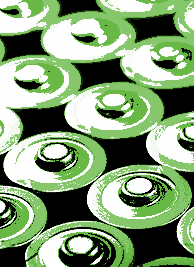Sulphur batteries advanced
 Engineers say they are close to creating a new battery “dream technology”.
Engineers say they are close to creating a new battery “dream technology”.
Experts around the world are searching for alternatives to the ubiquitous lithium-ion batteries that power everything from smartphones to electric vehicles.
A new sodium-sulfur battery created by engineers at The University of Texas at Austin appears to solve one of the biggest hurdles that has held back the technology.
Sodium and sulfur are appealing materials for future battery production because they are cheaper and more widely available than materials such as lithium and cobalt, which also have environmental and human rights concerns.
“I call it a ‘dream technology’ because sodium and sulfur are abundant, environmentally benign, and the lowest cost you can think of,” says lead researcher Dr Arumugam Manthiram.
The researchers were able to tweak the makeup of the electrolyte, the liquid that facilitates movement of ions back and forth between the cathode and anode to stimulate charging and discharging of the batteries.
They attacked the common problem in sodium batteries of the growth of needle-like structures, called dendrites, on the anode that can cause the battery to rapidly degrade, short circuit, and even catch fire or explode.
The researchers also created an electrolyte that prevents the sulfur from dissolving and thus solves the shuttling and dendrite problems. That enables a longer life cycle for the battery, showing a stable performance over 300 charge-discharge cycles.
“When you put a lot of sugar in water, it becomes syrupy. Not everything is dissolved away,” says Amruth Bhargav, a doctoral student in Manthiram’s lab.
“Some things are half linked and half dissolved. In a battery, we want this in a half-dissolved state.”
The new battery electrolyte was designed in a similar vein by diluting a concentrated salt solution with an inert, nonparticipating solvent, which preserves the “half-dissolved” state.
The researchers found that such an electrolyte prevents the unwanted reactions at the electrodes and thus prolongs the life of the battery.
Their findings are accessible here.







 Print
Print